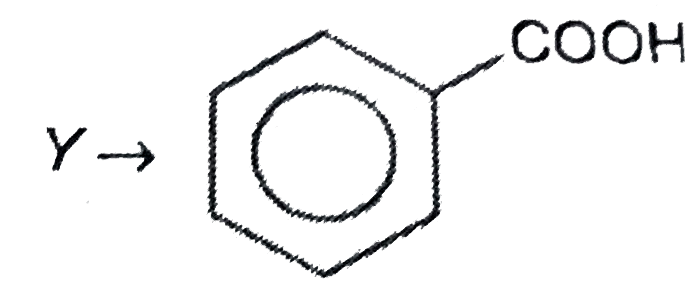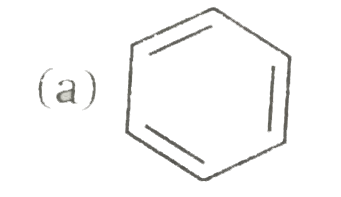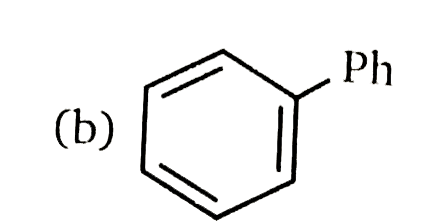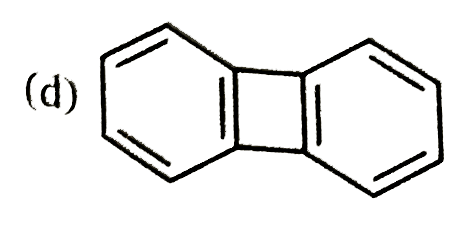An organic compound (A) with molecular formula C8H8O forms an orange red precipitate with 2,4 -DNP reagent and gives yellow precipitate on heating with iodine in the presence of sodium hydroxide . It neither reduces Tollen's reagent or Fehling's solution , nor does it decolourise bromine water or Baeyer's reagent. On drastic oxidation with chromic acid, it gives a carboxylic acid (B) having molecular formulae C7H6O2. Identify the compound (A) and (B) and explain the reactions involved .
To solve the problem, we need to identify the organic compound (A) with the molecular formula C8H8O and the carboxylic acid (B) it produces upon oxidation. We will analyze the information provided step by step.
Step 1: Analyze the Molecular Formula
The molecular formula of compound (A) is C8H8O. This indicates that it is likely an aromatic compound due to the degree of unsaturation (which suggests the presence of a ring structure).
Hint: Look for the presence of an aromatic ring based on the degree of unsaturation.
Step 2: Reactivity with 2,4-DNP Reagent
Compound (A) forms an orange-red precipitate with the 2,4-DNP reagent. This reagent is a test for carbonyl compounds (aldehydes and ketones). The formation of a precipitate indicates that (A) is indeed a carbonyl compound.
Hint: Remember that 2,4-DNP is used to test for carbonyl groups.
Step 3: Iodoform Test
The compound gives a yellow precipitate on heating with iodine in the presence of sodium hydroxide. This indicates that (A) is a methyl ketone, as only methyl ketones (and ethanol) give a positive iodoform test.
Hint: The iodoform test is specific for methyl ketones; consider the structure that fits this criterion.
Step 4: Exclusion of Aldehyde
The problem states that (A) does not reduce Tollen's reagent or Fehling's solution, which means it is not an aldehyde. Aldehydes typically give positive results for these tests, confirming that (A) is a ketone.
Hint: Use the results of Tollen's and Fehling's tests to differentiate between aldehydes and ketones.
Step 5: No Decolorization of Bromine Water or Baeyer's Reagent
The compound does not decolorize bromine water or Baeyer's reagent, indicating that it does not have a double bond or an alkene. This further supports that (A) is an aromatic ketone.
Hint: The lack of reaction with bromine water suggests no alkenes or alkynes are present.
Step 6: Oxidation to Carboxylic Acid
Upon drastic oxidation with chromic acid, compound (A) yields a carboxylic acid (B) with the molecular formula C7H6O2. This suggests that the ketone (A) likely contains a methyl group adjacent to the carbonyl group, allowing it to be oxidized to a carboxylic acid.
Hint: Consider the structure of the ketone that would lead to the formation of a carboxylic acid upon oxidation.
Conclusion
Based on the analysis, compound (A) is likely acetophenone (C6H5COCH3), which has the molecular formula C8H8O. Upon oxidation, it forms benzoic acid (C6H5COOH), which has the molecular formula C7H6O2.
Final Answer:
- Compound (A): Acetophenone (C6H5COCH3)
- Compound (B): Benzoic acid (C6H5COOH)
The molecular formula of compound (A) is C8H8O. This indicates that it is likely an aromatic compound due to the degree of unsaturation (which suggests the presence of a ring structure).
Compound (A) forms an orange-red precipitate with the 2,4-DNP reagent. This reagent is a test for carbonyl compounds (aldehydes and ketones). The formation of a precipitate indicates that (A) is indeed a carbonyl compound.
The compound gives a yellow precipitate on heating with iodine in the presence of sodium hydroxide. This indicates that (A) is a methyl ketone, as only methyl ketones (and ethanol) give a positive iodoform test.
The problem states that (A) does not reduce Tollen's reagent or Fehling's solution, which means it is not an aldehyde. Aldehydes typically give positive results for these tests, confirming that (A) is a ketone.
The compound does not decolorize bromine water or Baeyer's reagent, indicating that it does not have a double bond or an alkene. This further supports that (A) is an aromatic ketone.
Upon drastic oxidation with chromic acid, compound (A) yields a carboxylic acid (B) with the molecular formula C7H6O2. This suggests that the ketone (A) likely contains a methyl group adjacent to the carbonyl group, allowing it to be oxidized to a carboxylic acid.
Based on the analysis, compound (A) is likely acetophenone (C6H5COCH3), which has the molecular formula C8H8O. Upon oxidation, it forms benzoic acid (C6H5COOH), which has the molecular formula C7H6O2.
- Compound (A): Acetophenone (C6H5COCH3)
- Compound (B): Benzoic acid (C6H5COOH)
Topper's Solved these Questions
- ALDEHYDES ,KETONES AND CARBOXYLIC ACIDSBOOK - MODERN PUBLICATIONCHAPTER - ALDEHYDES ,KETONES AND CARBOXYLIC ACIDSEXERCISE - PRACTICE PROBLEMS
30 Videos
- ALDEHYDES ,KETONES AND CARBOXYLIC ACIDSBOOK - MODERN PUBLICATIONCHAPTER - ALDEHYDES ,KETONES AND CARBOXYLIC ACIDSEXERCISE - Conceptula Questions 1
14 Videos
- ALCOHOLS, PHENOLS AND ETHERSBOOK - MODERN PUBLICATIONCHAPTER - ALCOHOLS, PHENOLS AND ETHERSEXERCISE - UNIT PRACTICE TEST (FOR BOARD EXAMINATION)
12 Videos
- BIOMOLECULESBOOK - MODERN PUBLICATIONCHAPTER - BIOMOLECULESEXERCISE - UNIT PRACTICE TEST FOR BOARD EXAMINATION
13 Videos
Similar Questions
Compound which forms an orange red precipitate with 2, 4 - DNP reagent and gives yellow precipitate on heating with iodine in the presence of sodium hydroxide is
View SolutionAn organic compound (A) with molecular formula C8H8O forms an orange red precipitate with 2,4 -DNP reagent and gives yellow precipitate on heating with iodine in the presence of sodium hydroxide . It neither reduces Tollen's reagent or Fehling's solution , nor does it decolourise bromine water or Baeyer's reagent. On drastic oxidation with chromic acid, it gives a carboxylic acid (B) having molecular formulae C7H6O2. Identify the compound (A) and (B) and explain the reactions involved .
View Solution
Knowledge Check
An organic compound (A) with molecular formula C8H8O forms an orange red precipitate with 2,4 -DNP reagent and gives yellow precipitate on heating with iodine in the presence of sodium hydroxide . It neither reduces Tollen's reagent or Fehling's solution , nor does it decolourise bromine water or Baeyer's reagent. On drastic oxidation with chromic acid, it gives a carboxylic acid (B) having molecular formulae C7H6O2. Identify the compound (A) and (B) and explain the reactions involved .
A B
B C
C D
D
Which of the following can reduce Tollen's reagent but not Fehling solution ?
AC6H5CHOBCH3CHOCC3H7CHODCH3COCH3An organic compound 'P' with jmolecular formula C8H8O forms an organic red ppt with 2,4−DNP gives yellow ppt. on heating with I2 in presence of NaOH. It neither reduces tollen's or fehling reagent nor does it decolourise Br2 water or baeyer's reagent. On drastic oxidation with chromic acid (H2CrO4) it gives an acid (Q) having molecular formula C7H6O2.
Q. QNaOH/CaO/Δ−−−−−−−−−−→R (Major product).
R will be,A B
B C
C D
D
An organic compound [A] with molecular formula C9H10O forms an arage-red precipitate [B] with 2,4 DNP reagent. Compound [A] gives yellow precipiatate [C] on heating wihth iodine in the presence of soedium hydroxide along with a colourless compound [D]. The compound [A] does not reduce Tollen's reagent or Fehling's solution nor does it decolourise bromine water or Baeyer's reagent. On drastic oxidation with chromic acid, compound [A] gives a crboxylic acid [E] having molecular formula C7H6O2. Deduce the strcutres of the organic compounds [A] to [E].
View SolutionAn organic compound 'P' with jmolecular formula C8H8O forms an organic red ppt with 2,4−DNP gives yellow ppt. on heating with I2 in presence of NaOH. It neither reduces tollen's or fehling reagent nor does it decolourise Br2 water or baeyer's reagent. On drastic oxidation with chromic acid (H2CrO4) it gives an acid (Q) having molecular formula C7H6O2.
Q. Identify compound P:
View SolutionAn organic compound A with molecular formula C9H10O gives positive DNP and iodoform tests. It does not reduce. Tollen's reagent or Fehling reagent and does not decolourless bromine water or Bayer's reagent. On drastic oxidation with chronic acid, compound A gives a carboxylic acid having molecular formula C7H6O2. Deduce the structur eof organic compound A and write all the chemical reactions involved.
View SolutionAn organic compound 'P' with jmolecular formula C8H8O forms an organic red ppt with 2,4−DNP gives yellow ppt. on heating with I2 in presence of NaOH. It neither reduces tollen's or fehling reagent nor does it decolourise Br2 water or baeyer's reagent. On drastic oxidation with chromic acid (H2CrO4) it gives an acid (Q) having molecular formula C7H6O2.
Q. Pdil.өOH−−−→ΔSCH3MgBr(1 mole)−−−−−−−−−−−−→H3O⊕
No. of stereoisomer in the final product T:
View SolutionGive the reaction of glucose with Tollen's reagent and Fehling's solution.
View Solution
